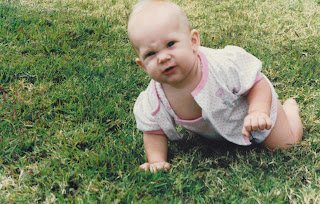Homeschool History and Science: Part 2
History was covered in a previous post here.
Science
1) Kym Write has written a series of Learn and Do Unit Studies that include lesson plans, hands on activities, and resources. Our absolute favorite in this series is Learn and Do: Microscope Adventure. We used this unit study when Stat Boy showed an interest in the microscope Karate Kid had received through K12. We had an absolute blast looking at microscopic life, making slides, designing experiments and filling out the included lab sheets. I don't think any of the kids realized we were actually doing school. Obviously, you would need a microscope and slide making kit to use this unit and this may mean a bit of an investment. Two of our favorite science materials suppliers are Tobin's Lab and Delta Education. Both suppliers have a variety of microscopes and accessories to fit most any science budget.
2) One of the great things about homeschooling is that you can really dive into subjects your children are interested in. In years past, our kids have been interested in space, animals, insects, geology, weather, etc. Great Science Adventures has titles for many of these interests. I came across this fun curriculum when searching for resources to use while studying space with our elementary aged children. This series is great for younger kids, especially emergent readers. Each unit comes with little science readers that can be read aloud or independently. Each chapter has extension activities, resources, and graphic organizers that help illustrate new ideas and concepts. Our family enjoyed both Great Science Adventures: The World of Space and Great Science Adventures: The World of Insects and Arachnids. For the astronomy buffs in your family Astronomy Magazine has a great webpage for kids. For your lovers of creepy crawlies, be sure to check out What's that Bug?
3) We all love gardening and many years we use our garden to study botany. To supplement this we've used a variety of books and resources. We've used Science with Plants by Mike Unwin and Green Thumbs: Radishes from TOPS, both of which provide ample experiments and hands on activities for exploring plant science. For gardening supplies and educational materials on composting we use Gardeners Supply Company. Kym Wright has also written a Learn and Do Botany Adventure Unit for high school students interested in continuing their biology studies with a more in depth look at the world of plants.
4) Ok, I haven't used this one yet, but I'm already convinced it will be a favorite. Special K has always been interested in weather, especially wild weather. I found this great site run by "The Weather Dude" and ordered his weather songs cd and accompanying activity book. The website has plenty of extras for budding weather enthusiasts. I do have to say the music and lyrics are pretty cheesy, but then Special K and Skoshi A do love cheese.
5) Ok, I haven't used this one yet either, but geology is kind of a family thing. Wingnut's dad, brother, and sister-in-law are all geologists and my kids have all been bitten by the rock bug at one time or another. This site is a terrific one for your rock hounds. I also plan on supplementing with a variety of Usborne and DK books for the fun of it, as well as getting out the rock kits, scratch tiles and rock identification books to explore.
6) We studied oceanography in co-op last year and I pulled most of my information from the web. I used Missouri Botanical Garden's wonderful site to teach about biomes with a specific emphasis on marine ecosystems. The Sea and Sky website has great information on a variety of sea life. Discovery Education has a great sub site devoted to ocean science, with lots of resources, teacher tips and fascinating facts. To wrap up our study of oceanography, each student gave an oral presentation on their favorite marine animal.
7) If I find my kiddos have an interest, and I'm unable to find an adequate resource to use, I often end up writing my own curriculum. I did this for zoology last year. We learned to classify animals using Linneaus's taxonomy and spent a lesson on each division/sub-division of animal. We supplemented with the DK Eyewitness Books for each classification.
8) To make sure my children have a good understanding of basic science concepts before high school, at around 6th to 8th grade I begin using Concepts and Challenges. These simple texts provide the foundational knowledge in life, earth, chemical, and physical science needed to succeed in high school science and beyond. I would like to note these texts are a tad dated, but for your science achievers this flaw can be a springboard for further exploration into more updated content.

Comments